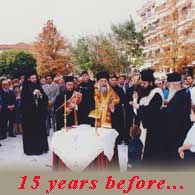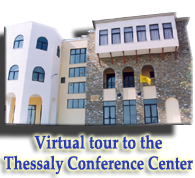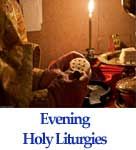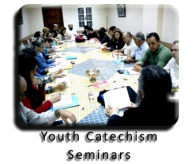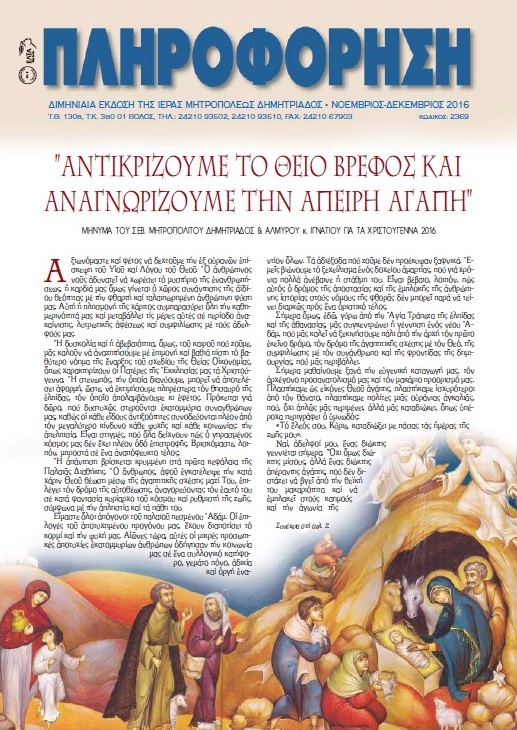Christ's Resurrection - Direct and Obvious Results
A glance at the book of Nikolaos Vasiliadis
The mystery of Death
The results of the cosmic victory of the Resurrected Christ were direct and obvious. The battle against the devil, death and Hades was essentially mystical in nature and invisible to men. The holy angels, however, were able to follow whatever had taken place. They saw that "an unarmed tree, a cross without iron and a dead body defeated the devil and put him and his angels to death". For "the more powerful one", that is, the Lord Jesus, "put to death the powerful warrior", the devil, by defeating him "with his own weapons".
Interpreting the word of St. Ρaul who was seeking "the righteousness from God that depends on faith; and the power of His resurrection..." (Phil. 3,10), St. John Chrysostom asks: What is meant by "the power of His resurrection?". The holy Father says that we have here "a new type". For, before Christ there were some who rose from the dead, but no one in the same way as Christ. All those before returned again to the earth; they were relieved temporarily from the tyranny of death. However, the body of the Master did not return to earth but was raised to heaven, destroying the entire tyranny of the enemy. At the same time He raised together with Himself the whole ecumene. By virtue of the divine resurrection, a mortal body was both resurrected and introduced into an immortal life that has no limitations nor an end, as St. Ρaul himself confirms: "Christ being raised from the dead will never die again; death no longer has dominion over Him" (Rom. 6,9). Consequently, the great miracle of the Resurrection of Christ is dual, for we have in it both "the resurrection itself and this particular kind of resurrection". The sin of Adam, to recall the sacred hymn-writer, was "fatal to man and not fatal to God". It brought about the death of the human nature of Christ, but could not also kill His immortal, divine nature. Νow, by virtue of the divine Resurrection, Hades may reign over human nature, because of original sin, but its reign is not eternal. For the mighty Lord, by being laid in a tomb, destroyed the locks of death with His life-giving hand and preached "true redemption" to the dead from old. At the same time He became "the first born of the dead", the first dead person to be resurrected. St. Nikodimos of the Holy Mountain responds to a question that may be raised on account of the words of the hymnographer: "Hades rules over the race of mankind but not eternally; for you, O mighty Lord, have broken the locks of death with your life-giving hand". He observes: "One rightly wonders, how above the holy melodist can say, Hades does not rule eternally and then, leaving Hades aside, goes on to say, being laid in a tomb, you (Lord) have broken the locks of death. He should have said that You, having descended to Hades have broken the locks of Hades, so that the above may agree with what follows; he should not have said the locks of death. The grave and death is one thing, and Hades is quite another. Death and the grave are a visible place containing the dead and visible bodies of men; Hades, however, is a formless, that is, invisible place, as its name denotes, containing the invisible souls of dead people". In response to this question, St. Nikodimos writes: "Grave and death and Hades are understood by the melodist as closely related without differentiation. For one is the servant of the other, according to Nikitas (Stithatos) the commentator of Gregory the Theologian. For, while the devil pierces men with the needle, the pleasure of sin, he delivers them to death, and death, receiving the dead, transports them to Hades. Rather, Hades and death are understood to be the devil, the originator of both of these, as Gregory the Theologian in his Homily on Holy Pascha, calls the devil death and Hades. After all, Hades and death are negative names that have no power of their own, nor do they rule over mankind, but the devil being an active (essence) being, is one who rules over them". Thus, by breaking the iron bars of Hades with His all-holy Body, the Lord was also directly giving life to those being held there as captives, and directly opening for all of us the way toward the Resurrection. As a result, the glorious Resurrection of Christ was a victory not only over His own death, but also over death in general. The faithful praise the Savior with gladness and a triumphant tone, because "we celebrate the death of death, the abolition of Hades, the beginning of another new and eternal life". Together with the Resurrected Christ the entire humanity is also raised up, and "the human race is clothed with immortallity". That is why this new, eternal and endless life, which the Resurrected Christ has granted to us, is called by St. Nikodimos of the Holy Mountain: "Α great gift, the richest happiness(...). Α gift of gifts, a blessing of blessings and a benevolence of benevolences". The deliverance from eternal death of all those who believed and believe in the Resurrected Christ is direct. The deliverance, however, from bodily death is indirect. Because the poison of death, which sin poured into human nature, continues to flow in our tissue and body; people continue to die a physical death. But the fear and the despair of death have been abolished. As has the tyranny of corruption. Now we live with the hope of the resurrection and new life. St. Paul leaves us no doubt. He writes: "If there is no resurrection of the dead, then Christ has not been raised;... For if the dead are not raised, then Christ has not been raised. If Christ has not been raised, your faith is futile and you are still in your sins" (I Cor. 15,13;16;17). With these words St. Paul teaches us that the Resurrection of Christ would have been without meaning and purpose; it would have been futile if all those, who believe in Him and who constitute the mystical body of His holy Church, were not resurrected with Him. But now Christ is indeed raised from the dead and has given to us the grace of the Resurrection. Just as the first fruits, which ripen earlier than the others, indicate that the whole harvest is due to follow, so does Christ; He was resurrected first before all the others and confirms with His Resurrection that the resurrection of all who have died will follow (cf. Ι Cor. 15,20). While physical death was overcome with the descent of the God-Man into Hades, the resurrection of our own bodies and their reunion with the souls will take place at the second and glorious Parousia of the Lord. This is not an arbitrary belief. We have a small but powerful example. The Evangelist Matthew writes that immediately after the death of the Savior and His descent into Hades "the tombs also were opened, and many bodies of the saints who had fallen asleep were raised, and coming out of the tombs after His resurrection they went into the holy city and appeared to many"! (Mt. 27, 52-53). Consequently, the Resurrected Lord was "the first-born from the dead" (Col. 1,18), who was followed by those He liberated! The Resurrected Lord was not alone; He had companions whose resurrection occurred directly after the Resurrection of the Master, in order to prove that Christ indeed destroyed the power of death and abolished the kingdom of Hades. Of course the gospel passage is somewhat vague as to what happened to those who were raised and to whom they appeared. Most interpreters accept that their resurrection was a definite one and that "they went into the holy city with the Lord(...) both the earthly and the heavenly one". In any case all those who are transferred by the Resurrected Christ to the glorious mansions of Paradise instantaneously, constitute the pledge of our own resurrection. Moreover, it is a proof "that death was abolished by the death of Christ(...). For the death of Christ has granted to those of us, who are responsible, entry into the heavenly Jerusalem". All these things confirm that which St. John Chrysostom writes: After the Resurrection of Christ we die, but do not remain in death; this means that it is not really a death. We have tyranny of death and real death when the dead person has no possibility to return to life. But when, after dying, one is able to live again and enjoy a better life at that, "this is not really a death, but a sleep"! St. Athanasios teaches the same: Now we no longer die as we were dying before the Resurrection of the Lord; we do not die the death that was the result of the condemnation of the forefathers, for the condemnation has now ended. But because the grace of the Resurrection both puts an end to and abolishes corruption, the mortal part of our body is decomposed only at the time determined for each of us by God. This happens so that we may be made worthy to receive a better resurrection. For, as seeds sown in the earth do not really disappear, so is it with us; when we die we do not disappear by decomposition, but are raised up as if we were sown, since death was abolished by the grace of the Savior so that we may attain to a better resurrection, according to St. Athanasios. Through our Risen Lord, "the resurrection is a mysterious birth into immortality, into a new and uninterrupted, that is, eternal life. Even death becomes a birth(...) Everyone will be resurrected. Henceforth the separation from the body is temporary". The Lord's right hand not only wrought marvels, but did so in a marvelous manner. For "through death death was undone; through a curse the curse was raised and a blessing bestowed". We were expelled from Paradise by a virgin, Eve. But we also "found life eternal" through a Virgin, the Lady Theotokos. Moreover, everything that the Lord did was awesome and marvelous: "Death was defeated, Hades was broken, Paradise was opened; heaven is now unfurled, demons are confounded(...), hopes of resurrection are inaugurated, and there are expectations of immortality and the enjoyment of ineffable blessings".










